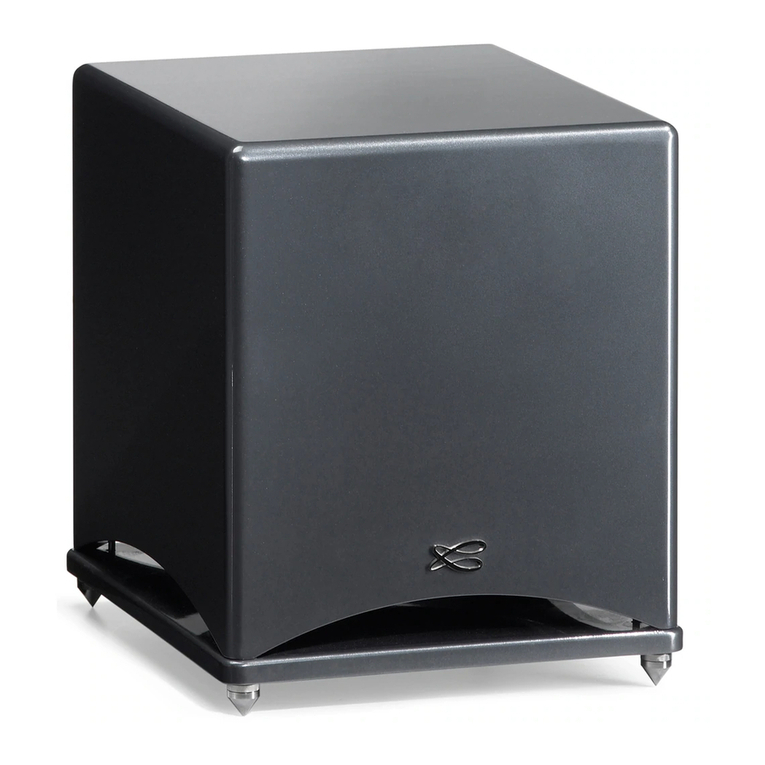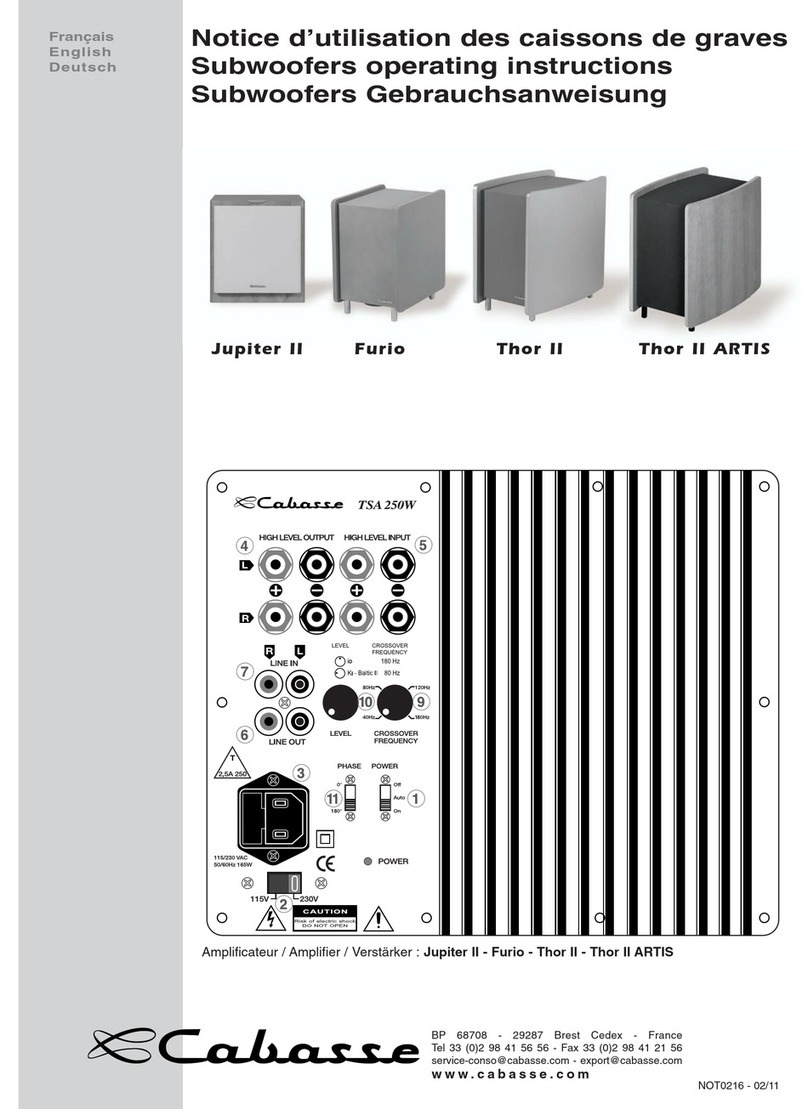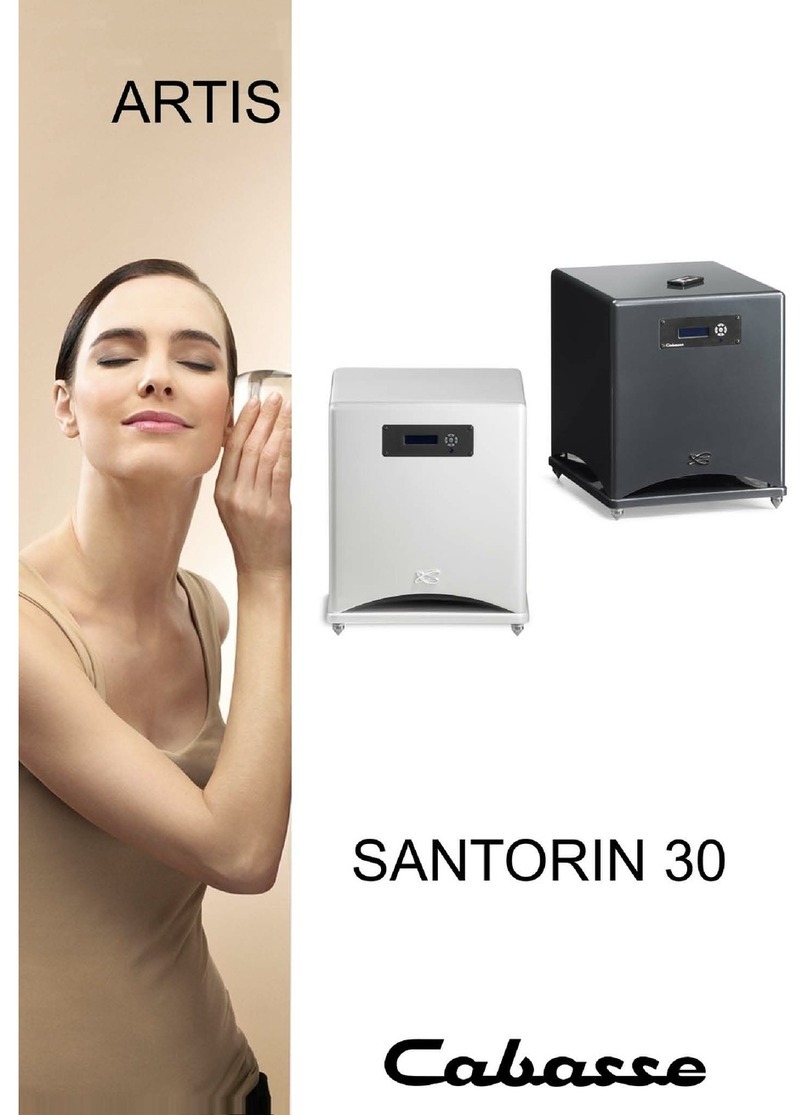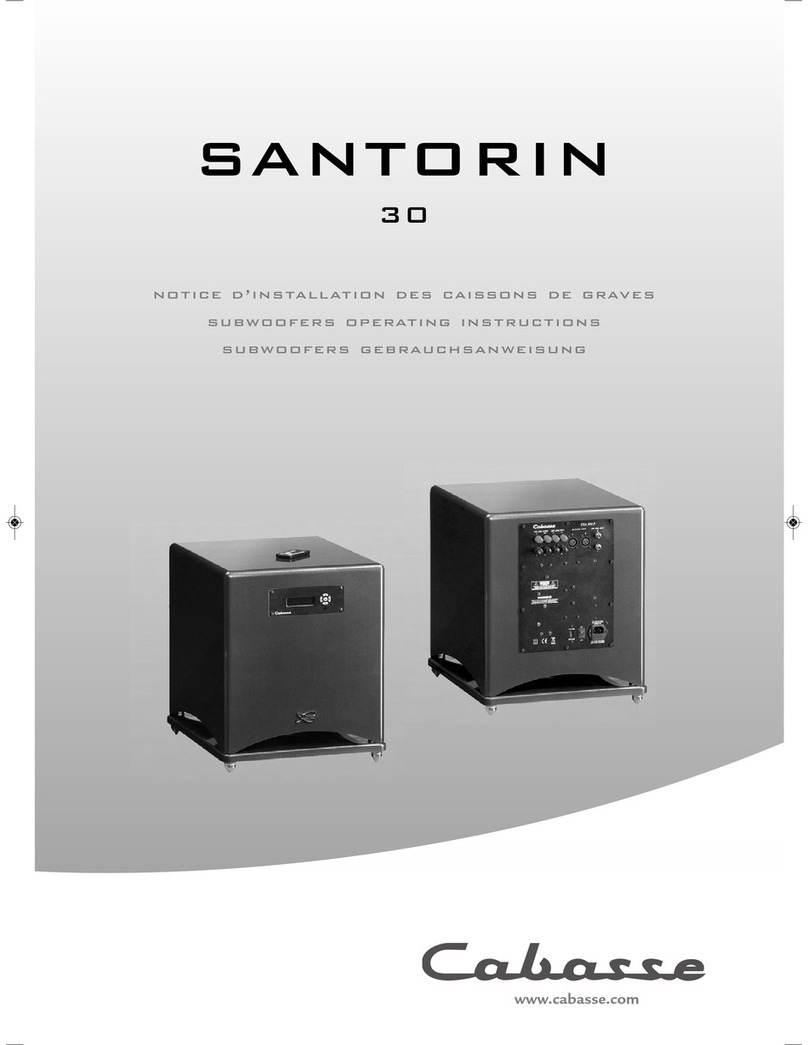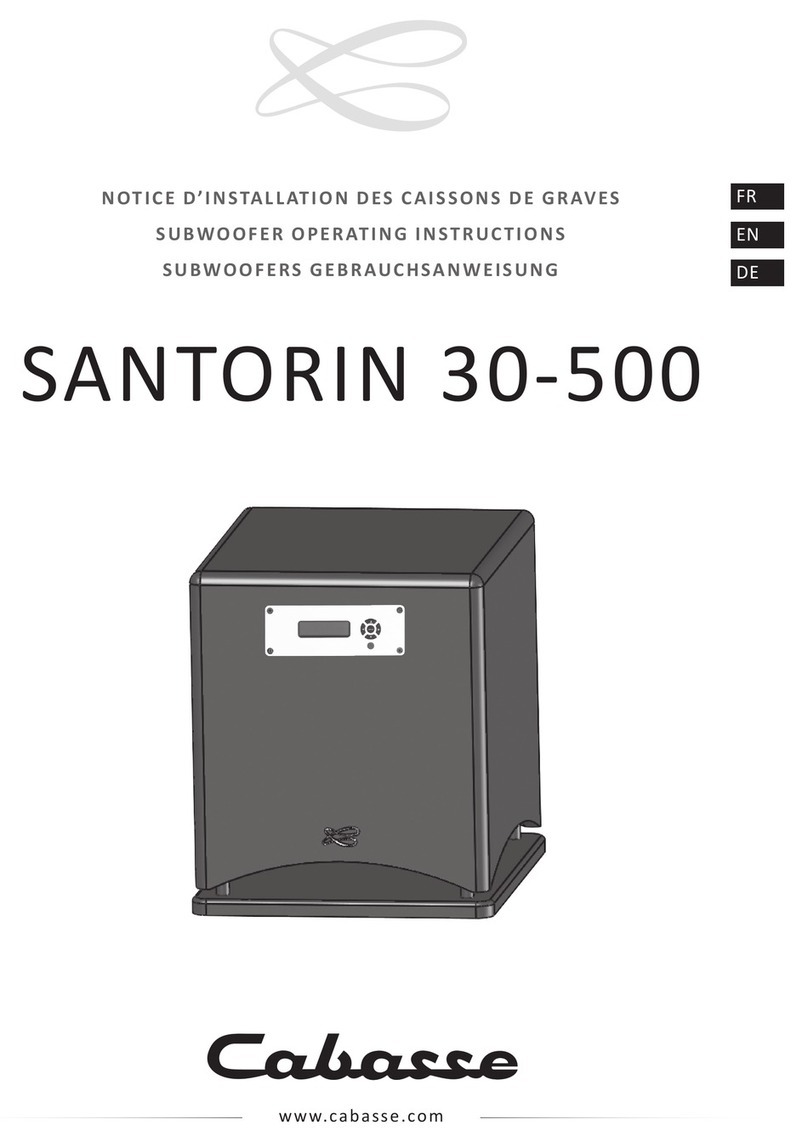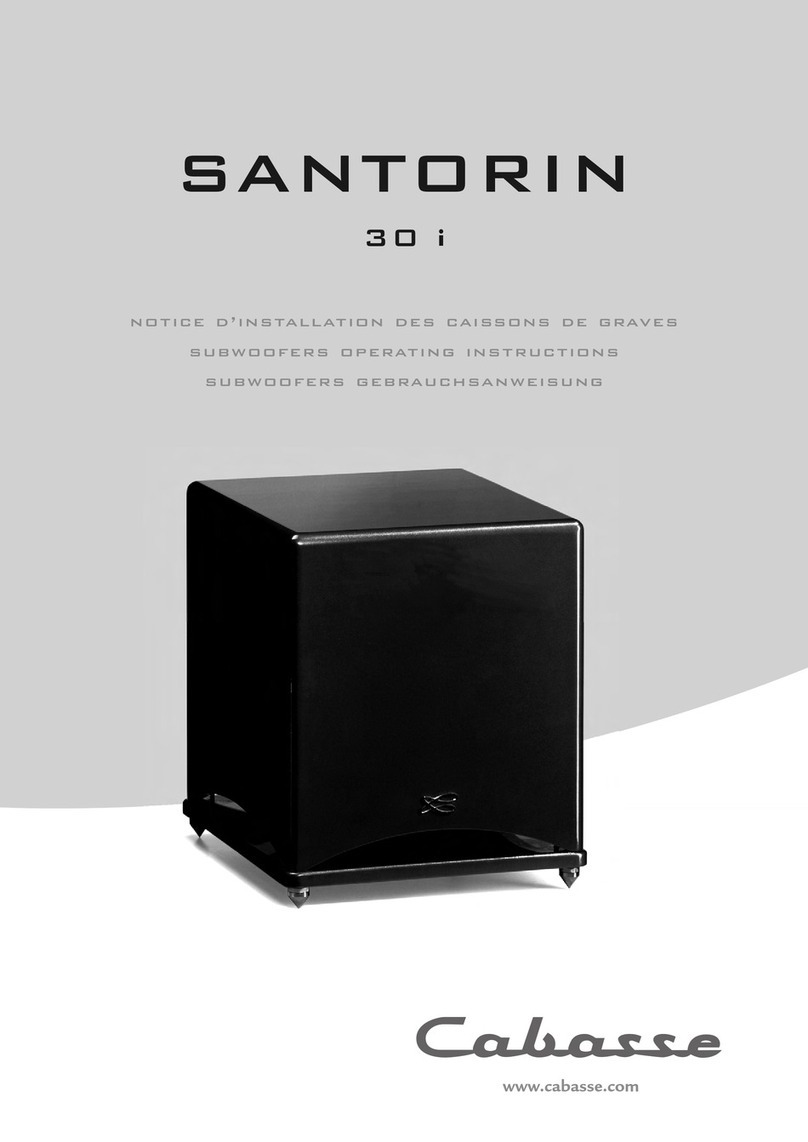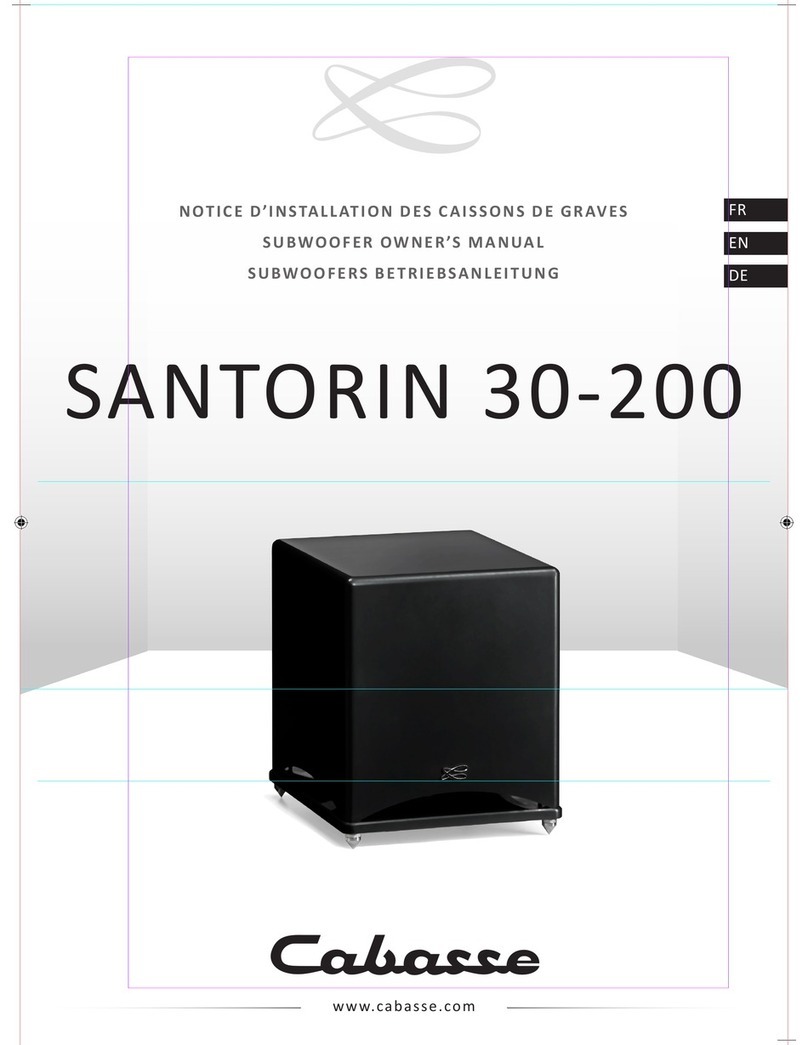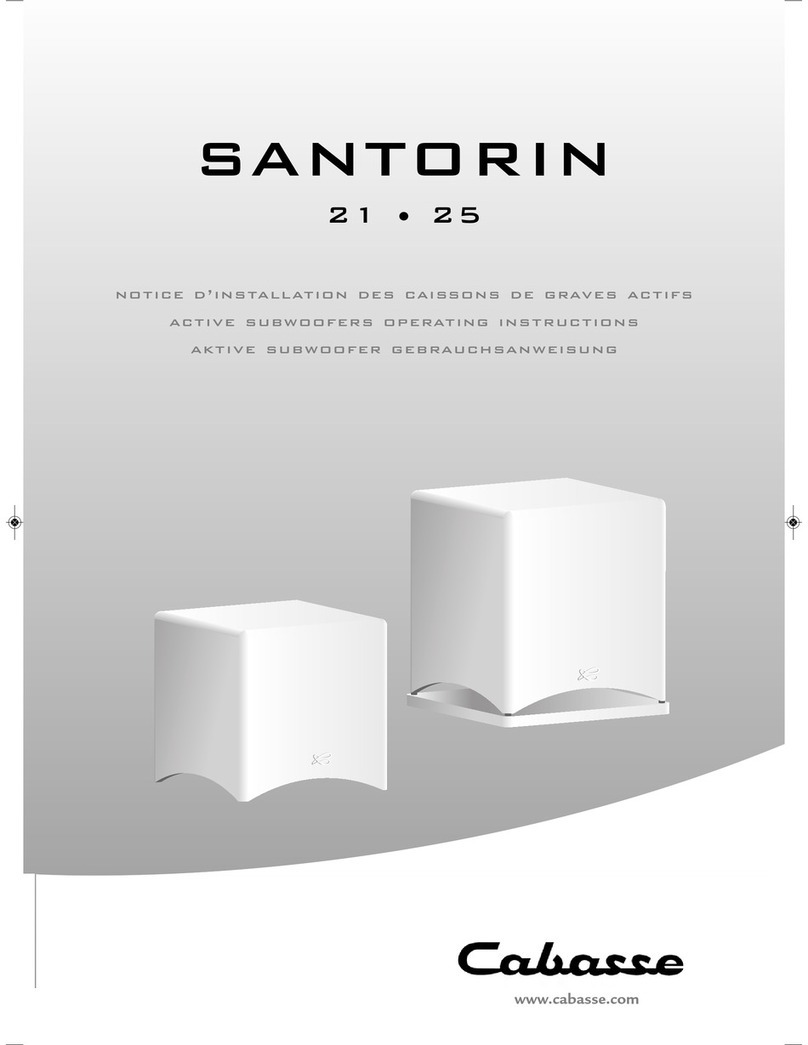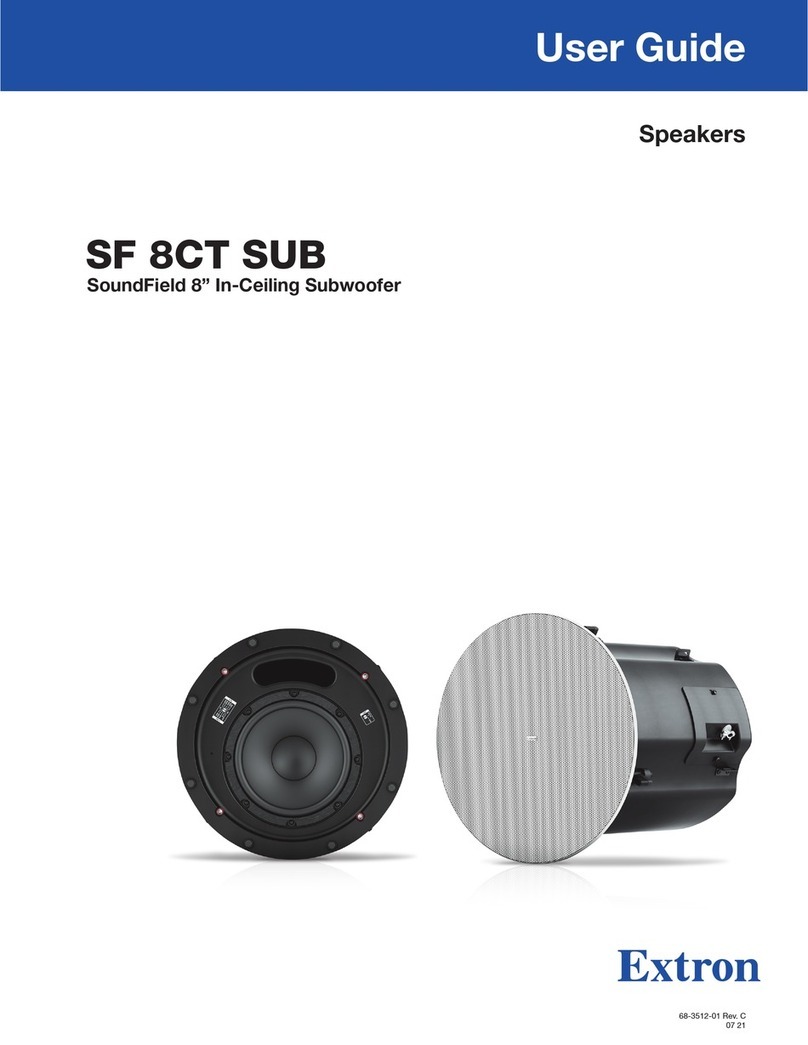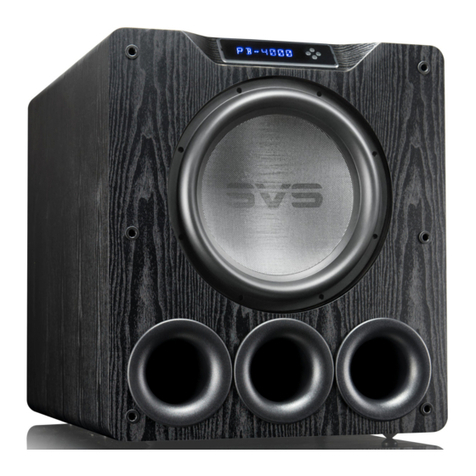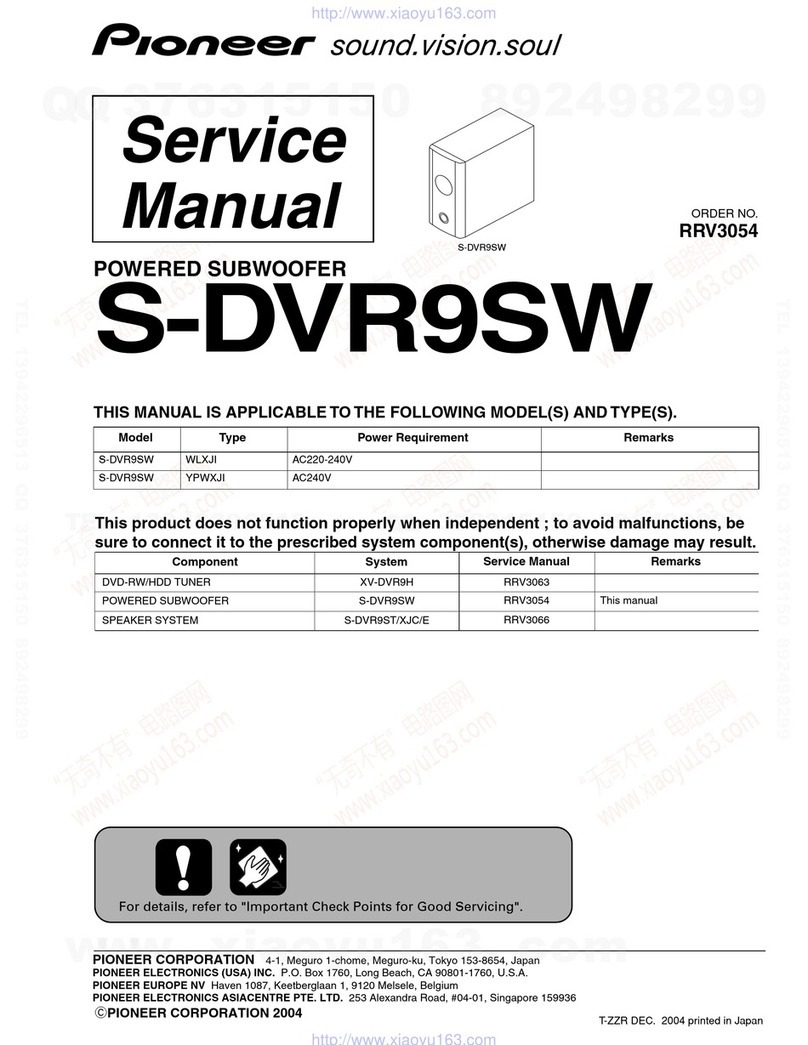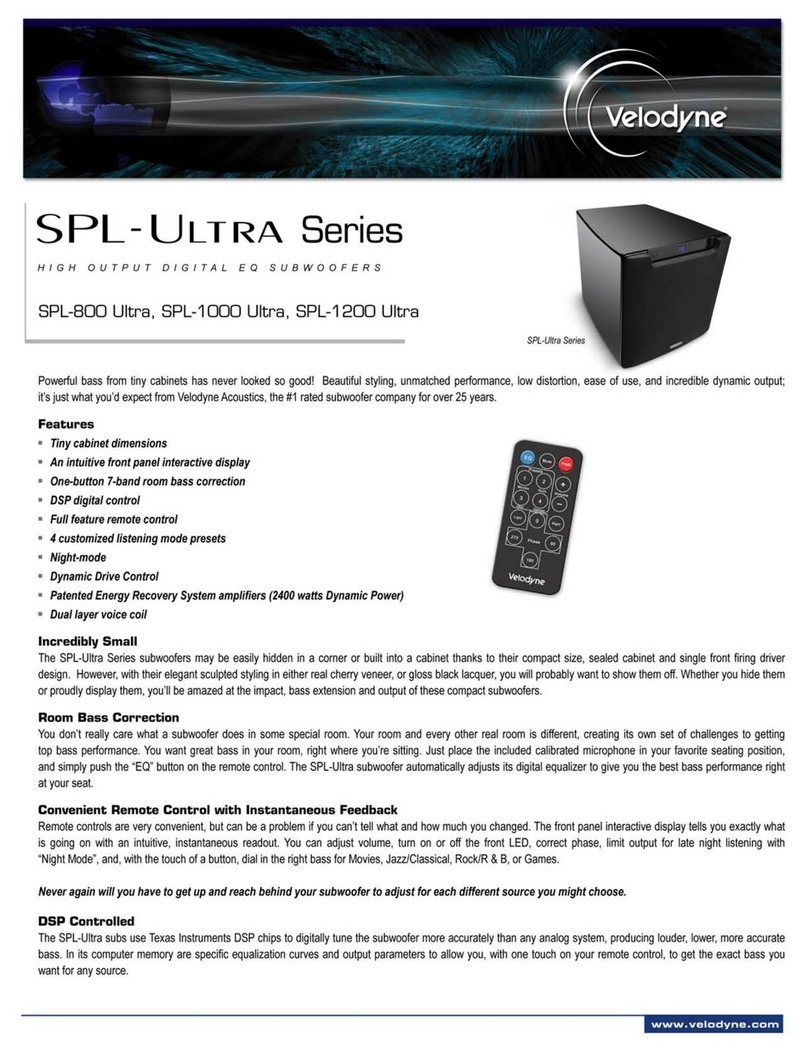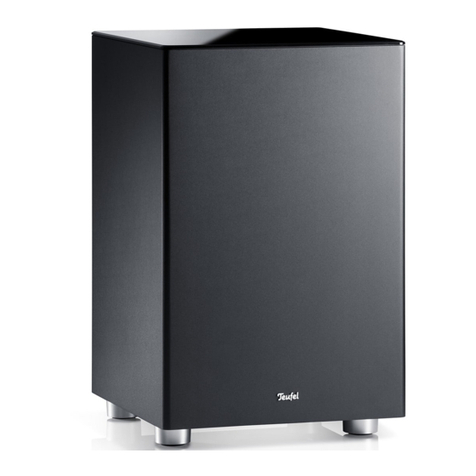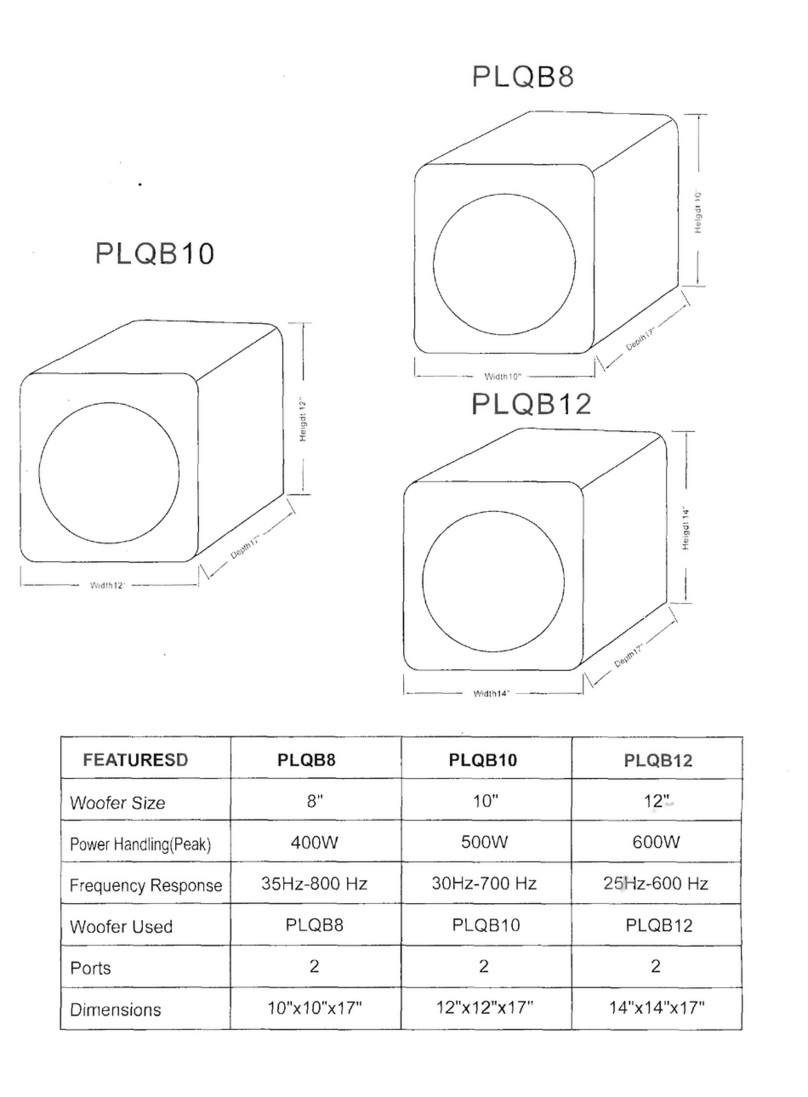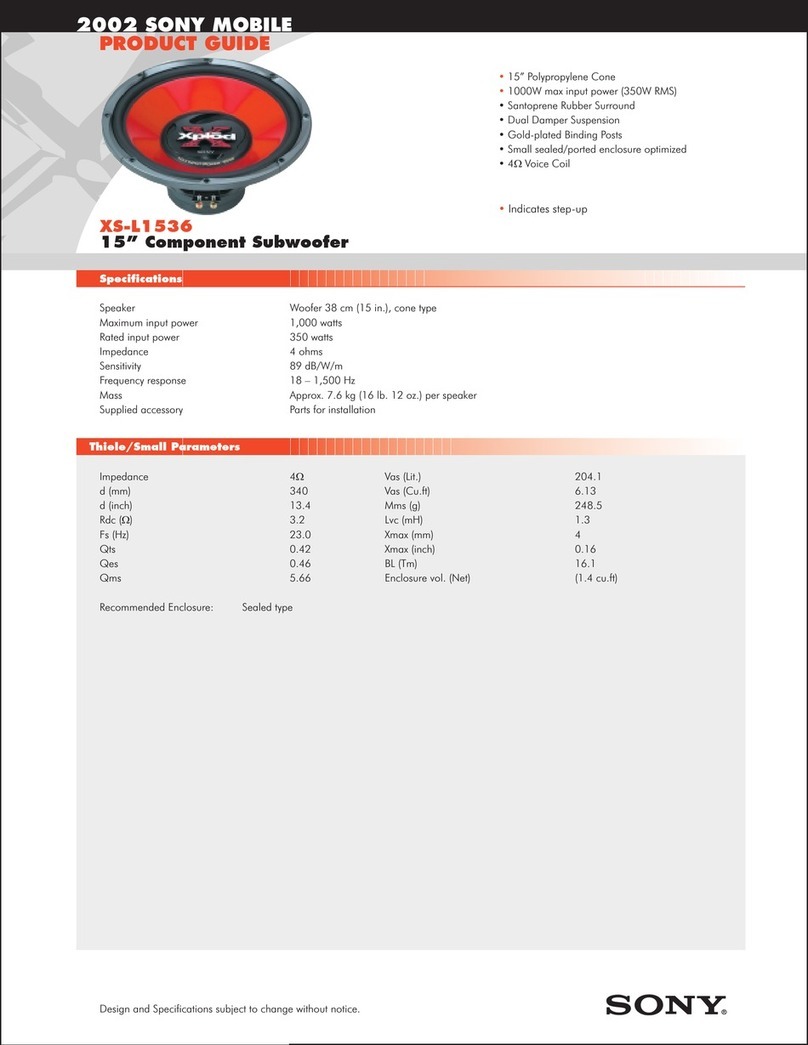f r a n ç a i s
DEBALLAGE DU SANTORIN 30
Le système est livré dans 2 emballages.
Contenu du carton principal: un Santorin 30, 4 cônes de découplage, un
câble secteur, 1 fiche de garantie et un manuel d'utilisation.
Contenu du carton "kit microphone": un préamplificateur-micro et son
alimentation, 1 microphone et son pied, 2 câbles de liaison XLR.
Ouvrir le côté mentionné "Côté à ouvrir" du carton principal contenant
le Santorin 30, replier sur les cotés les rabats supérieurs du carton. Retour-
ner l’emballage avec son contenu, vider le carton de son contenu et sor-
tir l’enceinte de son emballage. Nous vous conseillons de conserver les
emballages à plat pour une utilisation ultérieure éventuelle.
POSITIONNEMENT ET PLACEMENT
DES ENCEINTES ACOUSTIQUES
Positionnement des enceintes
Nos caissons de graves sont prévus pour fonctionner en position
verticale.
La plupart de nos modèles sont livrés avec un jeu de pointes ou cônes
de découplage. Ces accessoires sont à visser dans l’empla cement pré-
vu sous vos enceintes. Ces pointes ou cônes de découplage permettent
d’assurer une meilleure stabilité de l’enceinte tout en limitant les réso-
nances pouvant être générées par certains types de sols comme les plan-
chers par exemple.
Le champ magnétique des moteurs des haut-parleurs va rayonner au delà
de l’enveloppe de l’enceinte acoustique. Il faut donc éloigner d’environ
50 cm les appareils et objets sensibles à ce type de rayonnement (télé-
viseurs et écrans d'ordinateur type CRT, disquettes informatiques,
bandes magnétiques audio ou vidéo, cartes à puces...).
Le placement optimal
pour une écoute stéréo en 2.1
Dans le cadre d’une écoute stéréo avec 2 enceintes ou 2 satellites et 1
caisson de graves, nous vous conseillons de placer le caisson de graves
dans la zone écoute avant. Le placement du caisson contre un mur ren-
force l’extrême grave et limite les réflexions de 80 à 200Hz. Cependant,
pour obtenir le meilleur résultat, il est toujours nécessaire de faire des essais
d’emplacement en fonction de l’acoustique de la pièce.
Le placement optimal
pour une écoute Home Cinéma ou 5.1
Pour la disposition d’un ensemble home cinéma, il est important
d’apporter la plus grande attention à la disposition des enceintes
supplémentaires spécifiques.
■L’enceinte centrale doit être placée le plus près possible de l’écran en
recherchant la position dans le lieu d’écoute qui apporte la plus
grande cohésion sur les dialogues entre le son et I’image. En pratique,
cela revient à placer l’enceinte centrale au-dessus de l’écran si les enceintes
principales sont plus basses que celui-ci, et en dessous si les enceintes
principales sont plus hautes.
■Les enceintes arrière, voies d’effet ou surround doivent être disposées
contre les murs latéraux, légèrement en hauteur. Elles doivent être situées
légèrement en arrière de la zone d’écoute.
■Le caisson de graves doit être placé dans la zone d’écoute avant. Son
placement contre un mur renforce l’extrême grave et limite les réflexions
de 80 à 200 Hz. Cependant, pour obtenir le meilleur résultat, il est
toujours nécessaire de faire des essais d’emplacement en fonction de
l’acoustique de la pièce.
Votre amplificateur audio-vidéo permet le réglage des niveaux et des
distances de chaque enceinte. Ce réglage doit être ajusté avec soin de
manière à obtenir une parfaite cohésion entre les sources sonores.
Il est nécessaire d’éteindre tous les appareils avant la connexion des
enceintes. Pour le branchement de vos enceintes acoustiques, il faut
tenir compte de la section des câbles et du respect des phases.
Section des câbles
Pour conserver toutes les qualités
des enceintes acoustiques et éviter
les pertes de puissance, il faut que
la résistance électrique des câbles de
branchement entre I’enceinte et
I’amplificateur soit la plus faible
possible. Pour vous aider à choisir
la meilleure section de câble pour
votre installation, veuillez suivre le tableau récapitulatif.
Phase
Les enceintes et les amplificateurs ont leurs bornes de branchement
repérées. Il y a deux façons courantes d’effectuer ce repère : soit une
borne rouge ou repère +, soit une borne noire ou repère -.
Dans tous les cas, il faut que les deux canaux soient branchés de façon
identique, c’est à dire par exemple que la borne rouge ou+ de l’encein-
te aille à la borne rouge ou+ de l’amplificateur ; la borne noire ou de
I’enceinte ira dans ce cas à la borne noire ou- de I’amplificateur.
Secteur et mise en route
La prise sert à alimenter le caisson de
graves. La sélection de la tension
d’alimentation est effectuée par le
commutateur 115 V - 230 V . La mise
en route s’effectue par l’interrupteur
POWER , en le mettant dans la
position ON.
Mettre le subwoofer en mode actif en
appuyant sur la touche POWER de la
télécommande ou sur n'importe quelle
touche du clavier frontal de caisson de graves.
3 à 4 secondes sont nécessaires à l'activation du système..
RÉGLAGES
I) DESC IPTIF DES PA AMET ES EGLABLES
UTILISATION DU CLAVIER DU PANNEAU DE CONTROLE RONTAL :
Les 5 touches du panneau de contrôle permettent de se déplacer dans
le menu déroulant du Santorin 30.
Les touches « ←» et « →» (TP6 et TP3) permettent de sélectionner les
paramètres ci-dessous, les touches « ↓» et « ↑» (TP4 et TP2) de
choisir parmi les options ou de sélectionner la bonne valeur. La touche
« ENTER » (TP1) permet de confirmer un réglage en réponse aux
demandes « ENTER ? » et « VALIDATE ? ».
A) PARA ETRES REGLABLES UNIQUE ENT A PARTIR DU
PANNEAU DE CONTROLE :
- SOURCE : sélection des types d’entrées/sorties utilisées :
■RCA+HL : entrées RCA « LOW LEVEL INPUTS» et
entrées/sorties haut-niveau « HIGH LEVEL INPUTS »
(bornes haut-parleur ). Il est possible suivant les configurations
système d’utiliser simultanément les entrées RCA et HL.
■XLR : connecteurs XLR
- CHANNELS : sélection des canaux d’entrée utilisés :
■R : canal droit
■L : canal gauche
■R+L : canaux droit et gauche
- VOLUME : réglage du niveau sonore du caisson de -30 dB à +6 dB. Les
A3
A1
A2
A7
A5
A6
Distance Section
ampli - enceinte
4,5 m 1,5 mm2
6 m 2 mm2
7,5 m 2,5 mm2
9 m 3 mm2
12 m 4 mm2
Attention !
Avant tout branchement,
s’assurer que votre tension
secteur correspond bien à
la tension secteur sélectionnée
sur le commutateur
115 V - 230 V .
A1
Attention ! Etant donné le poids élevé de cette enceinte,
2 personnes sont nécessaires pour effectuer le déballage.
